Definition Of Vultures And Their Role İn Ecosystems
Vultures are known for their reputation as scavengers. These birds of prey are found on every continent except for Australia and Antarctica. There are 23 species of vultures that are recognized worldwide. While they may not be the most glamorous of birds, they play a crucial role in maintaining the balance of many ecosystems.
These scavengers perform a necessary service by consuming the carcasses of dead animals. Vultures are highly adapted to this role, with features such as their sharp eyesight and keen sense of smell. They can detect carrion from miles away, and are able to locate food quickly. This is essential in ensuring that dead animals are removed from the environment before they begin to decompose and attract parasites and other scavengers.
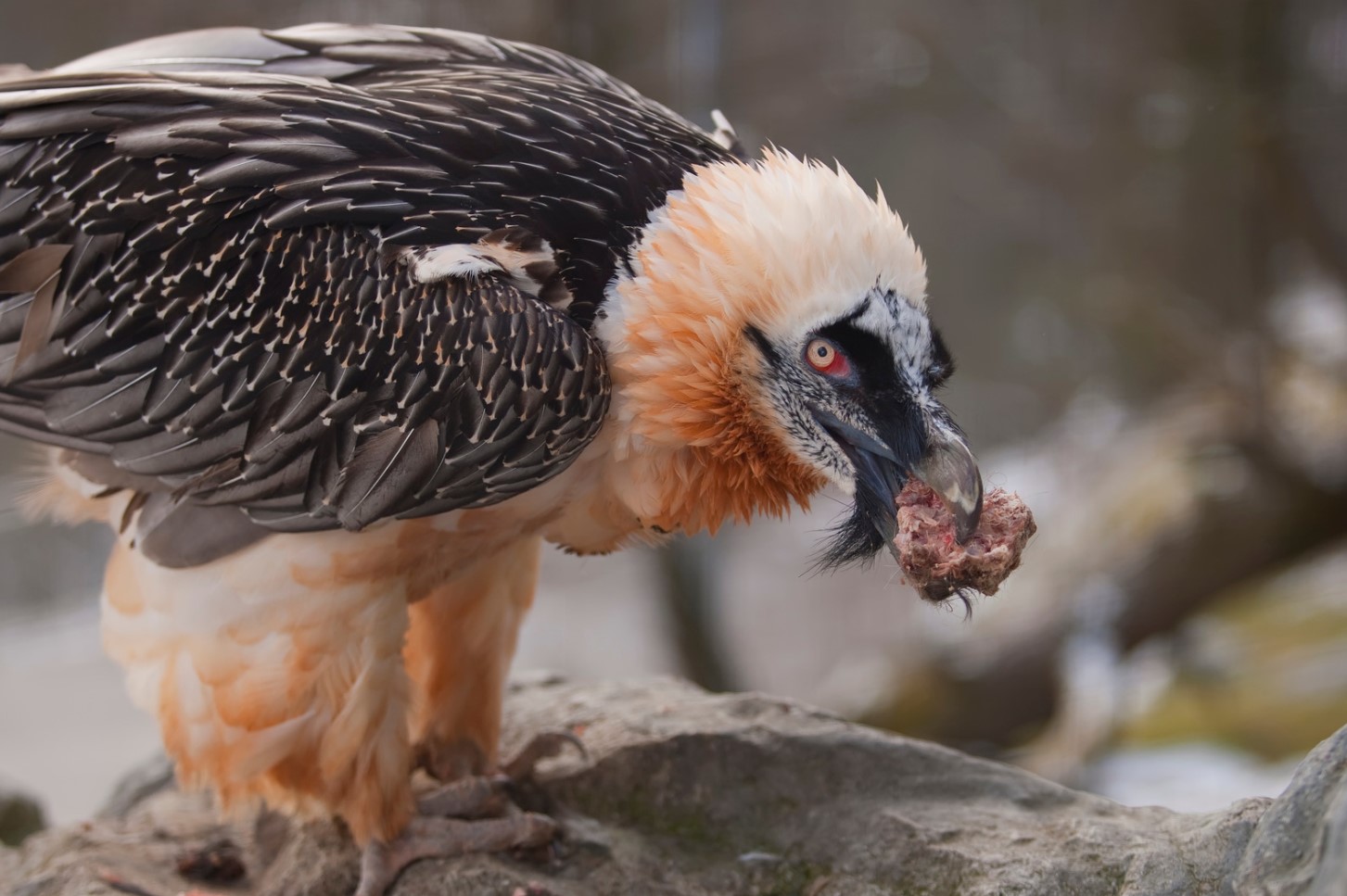
Unfortunately, some cultures view vultures as pests or associate them with negative connotations such as death. This has led to their persecution in certain areas, either through hunting, capture for use in traditional medicine, or poisoning. These threats have led to a decline in vulture populations globally. Conservation efforts are being made to protect and preserve these important birds, but much work still needs to be done.
- Vultures are found on every continent except for Australia and Antarctica
- 23 species of vultures are recognized worldwide
- Vultures play a crucial role in maintaining the balance of many ecosystems by consuming the carcasses of dead animals
- Vultures are highly adapted to their scavenger role, with sharp eyesight and keen sense of smell
- Vultures are threatened by hunting, capture for use in traditional medicine, or poisoning
| Fun Fact | Diet |
|---|---|
| Vultures are capable of consuming up to 20% of their own body weight in just one meal! | While most vultures primarily consume carrion, some species have been known to hunt live prey or eat eggs. |
In conclusion, vultures may not be the most glamorous or beloved bird species, but they are necessary for maintaining the health of many ecosystems. Their role as scavengers ensures that dead animals are quickly and efficiently removed from the environment. We must protect and conserve vulture populations for the benefit of our world’s ecosystems.
Types Of Vultures Around The World
Vultures are a unique family of birds that are widely known for their scavenging nature. They belong to the Accipitridae family, which also includes eagles, hawks, and kites. Despite their unappealing reputation, vultures are important members of ecosystems around the world.
Types of vultures found around the world can vary in many different ways. One of the most noticeable differences between vulture species is their size, which can range from small to large. For example, the Egyptian vulture is one of the smallest vulture species, while the Andean condors and California condors are among the largest.
- Egyptian Vulture: This species is found mainly in Europe and Asia, and is known for its bright yellow face and small size.
- Bearded Vulture: Also known as the lammergeier, it inhabits mountainous areas of Europe, Asia, and Africa. They are known for their unique diet, as they primarily feed on bones.
- Griffon Vulture: This species can be found in Europe, Asia, and Africa. They are known for their large size and distinctive hump on their necks.
These are just a few examples, as there are over 23 species of vultures around the world, each with their own unique characteristics.
In addition to their physical characteristics, vulture species can also differ in their geographic distribution. For example, the Andean condor is found only in South America, while the Eurasian black vulture is primarily found in Europe and Asia.
| Vulture Species | Regions Found |
|---|---|
| Andean Condor | South America |
| Eurasian Black Vulture | Europe and Asia |
| Ruppell’s Vulture | Africa |
Overall, the diversity of vulture species around the world is a testament to their adaptability and importance in the natural world. Despite the challenges facing vulture populations, efforts to conserve and protect these unique birds remain ongoing.
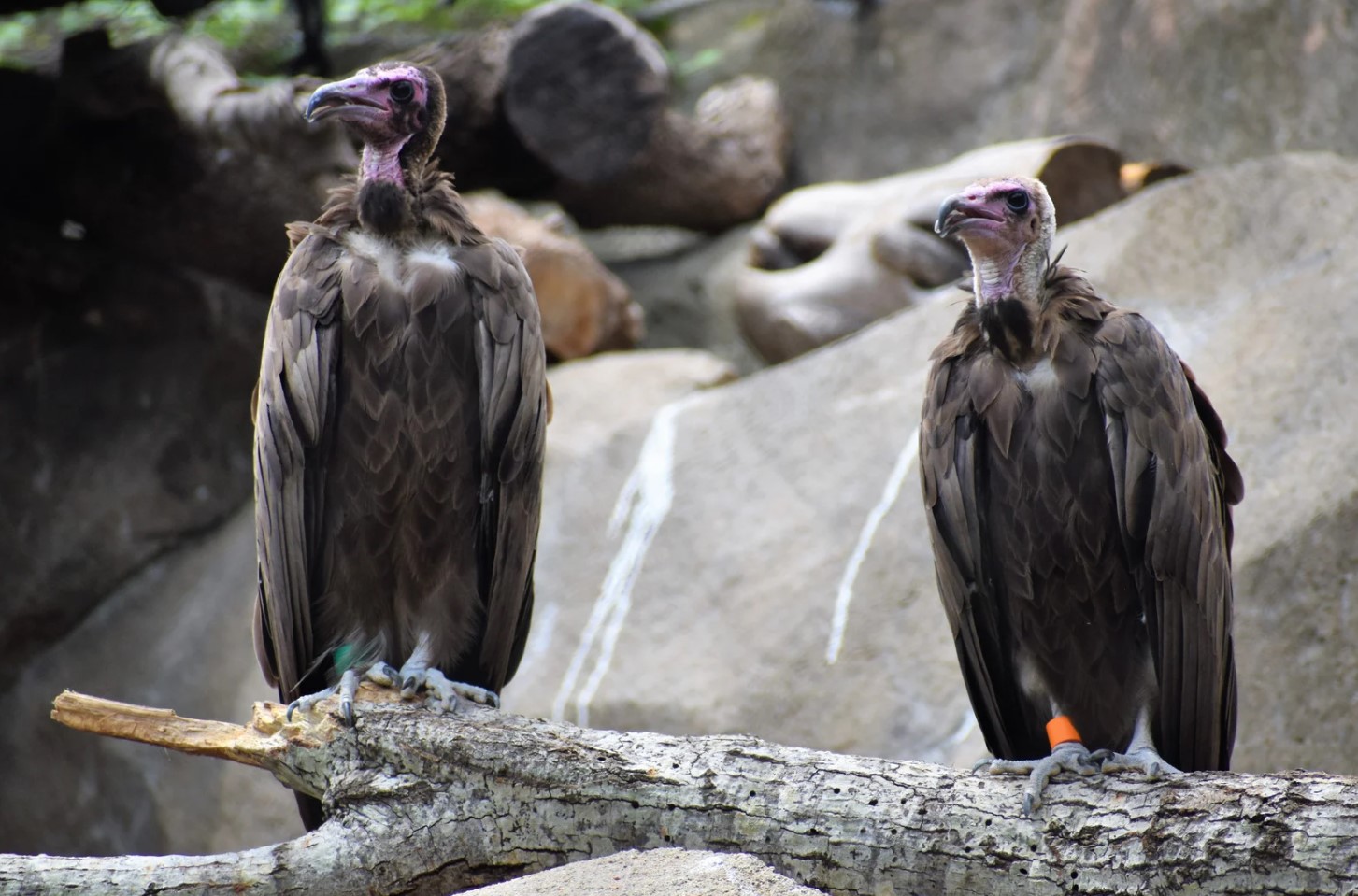
Geographic Distribution Of Vultures
Vultures are some of the most fascinating birds in the world that play a critical role in maintaining the balance of ecosystems. These birds of prey are known for their scavenging abilities and their unique physical adaptations that allow them to feed on carrion. Although most vultures are found in certain parts of the world, their geographic distribution spans across several continents. In this blog post, we will explore the geographic distribution of vultures and the different types of vultures found in various regions of the planet.
The Middle East, Africa, Europe, and Asia are the regions where you can observe the highest concentration of vultures. The Himalayas in Asia boast the highest vulture species diversity. Several species of vultures are native to Africa, including the lappet-faced vulture, Rüppell’s vulture, and the white-backed vulture. Europe is home to two species of vultures, the bearded vulture and the griffon vulture. Asia, the largest continent on earth, has the highest number of species of vultures, including the Egyptian vulture, the Himalayan vulture, the cinereous vulture, and the red-headed vulture.
- The Himalayas in Asia – highest vulture species diversity.
- Africa – home to several native species of vultures, including the lappet-faced vulture, Rüppell’s vulture, and the white-backed vulture.
- Europe – two species of vultures, the bearded vulture and the griffon vulture.
- Asia – highest number of species of vultures, including the Egyptian vulture, the Himalayan vulture, the cinereous vulture, and the red-headed vulture.
South and Central America, however, have the most significant vulture populations globally, with the turkey vulture being the most common species. The Andes Mountains in South America host several species of vultures, including the black vulture, king vulture, and the condor. In North America, the turkey vulture and the black vulture are the two most significant species of vultures.
| Location | Species of Vultures |
|---|---|
| The Himalayas in Asia | highest vulture species diversity. |
| Africa | home to several native species of vultures, including the lappet-faced vulture, Rüppell’s vulture, and the white-backed vulture. |
| Europe | two species of vultures, the bearded vulture and the griffon vulture. |
| Asia | highest number of species of vultures, including the Egyptian vulture, the Himalayan vulture, the cinereous vulture, and the red-headed vulture. |
| South and Central America | most significant vulture populations in the world, with the turkey vulture being the most common species. |
| The Andes Mountains in South America | host several species of vultures, including the black vulture, king vulture, and the condor. |
| North America | the turkey vulture and the black vulture are the two most significant species of vultures. |
Overall, vultures are distributed worldwide, but they are more prevalent in some regions than others. Knowing where different types of vultures are found is essential in understanding their ecological roles and facilitating targeted conservation efforts. Efforts must be made to protect these remarkable birds and their habitats, which are under serious threat from habitats loss, poisoning, and hunting.
Physical Characteristics And Adaptations Of Vultures
Vultures are fascinating creatures that belong to the bird family. There are about 23 species of vultures worldwide, each with unique physical characteristics and adaptations that have allowed them to survive in various habitats. The physical characteristics and adaptations of vultures are crucial to their survival and their role in maintaining the ecosystem.
One of the most significant adaptations of vultures is their keen eyesight, which enables them to spot carrion from miles away. They have a larger eye-to-body size ratio than most other birds, and their eyes are designed to detect movement and small details. Another notable physical characteristic of vultures is their featherless heads and necks, which prevents pieces of carrion from sticking to their feathers while feeding. Additionally, vultures have a robust digestive system that allows them to consume decaying meat without getting sick.
- Keen eyesight enables vultures to spot carrion from miles away
- Featherless heads and necks prevent carrion from sticking to their feathers while feeding
- Strong digestive system enables vultures to consume decaying meat without getting sick
Vultures also have specialized beaks that are designed to rip through tough skin and muscles to access the meat inside. Some species of vultures have hooked beaks that are ideal for tearing open carcasses, while others have blunt-tipped beaks that are better suited for scavenging soft tissue. Additionally, vultures have strong talons that allow them to grip carcasses while feeding and powerful wings that enable them to stay aloft for long periods while searching for food.
| Type of vulture | Beak Shape |
|---|---|
| Griffon Vulture | Hooked |
| Black Vulture | Blunt-tipped |
| Hooded Vulture | Sharp-tipped |
Lastly, vultures have the unique ability to soar effortlessly for hours at a time. This is due to their wide wingspans and their mastery of thermals, which are rising columns of warm air that allow birds to gain altitude without flapping their wings. By soaring above the ground, vultures can cover large distances while expending minimal energy.
In conclusion, vultures are highly specialized birds with remarkable physical characteristics and adaptations that have allowed them to thrive in a variety of ecosystems. Their featherless heads, keen eyesight, strong beaks, and powerful wings make them efficient scavengers that play a significant role in controlling the spread of disease by consuming carrion before it can rot and attract insects. Understanding the unique traits and adaptations of vultures is crucial to their conservation and the preservation of the ecosystem in which they live.
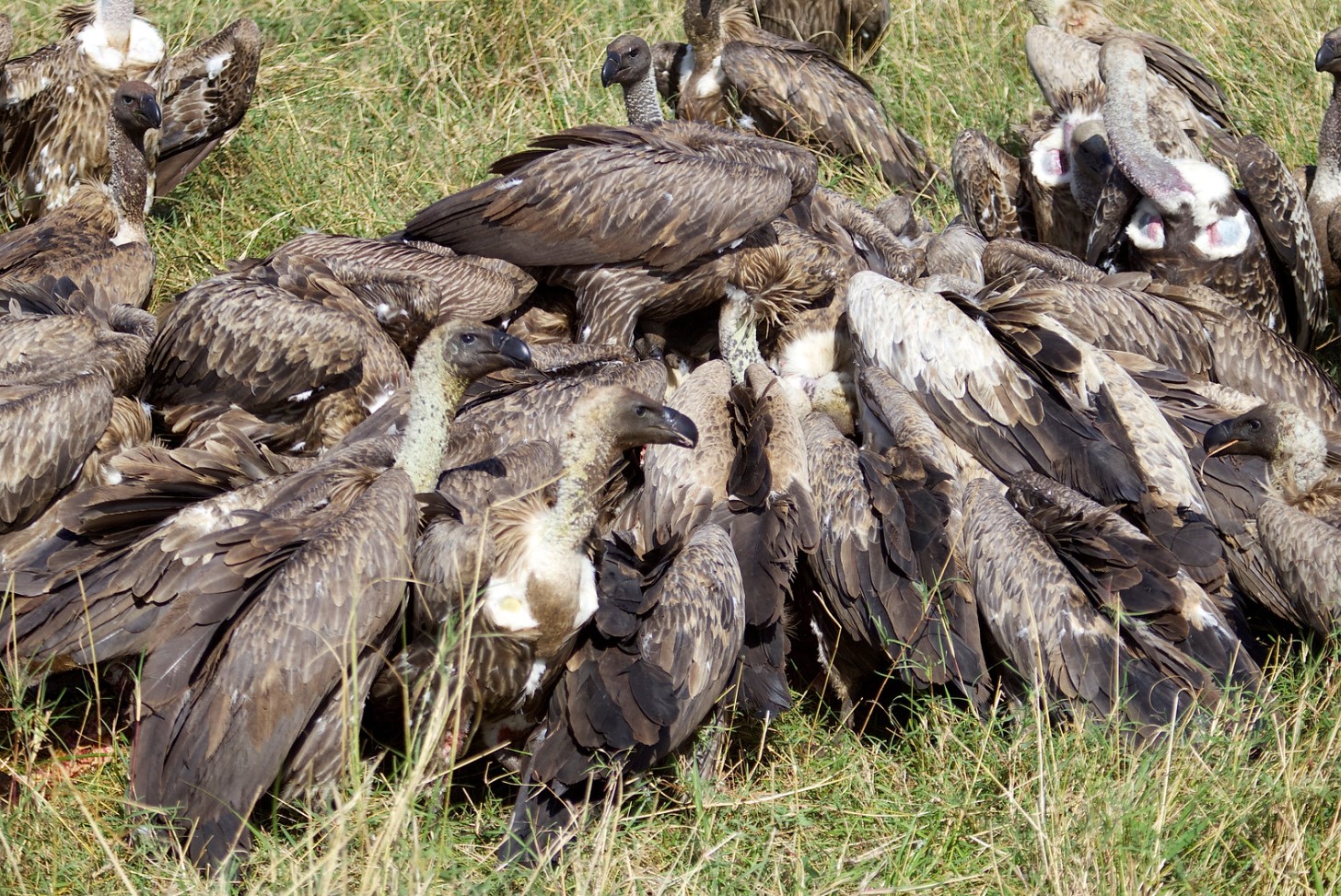
Feeding Habits And Diet Of Vultures
Vultures are one of the most important birds of the prey species that play a crucial role in the ecosystem. They have a unique and very distinct feeding habit, which makes them one of the most fascinating birds for bird lovers around the world. Their strong, sharp, and hooked beaks, along with their powerful legs and large wings, make them one of the most skilled scavengers in the bird kingdom.
Vultures feed mostly on carrion, which is the decaying flesh of dead animals that are left on the ground or up in the trees. They often locate their prey by following their sense of smell, which is incredibly strong and can detect the scent of a dead animal from miles away. Once they locate the carcass, they use their beaks to tear open the flesh and muscles to gain access to the internal organs.
- One of their unique feeding habits is that they consume the entire carcass, including the bones, fur, and feathers.
- Vultures eat quickly and efficiently, which minimizes the risk of spreading diseases that may be present in the carcass.
- They often feed in flocks, which is a behavior that helps them fend off predators while they eat.
The feeding habits and diet of vultures are essential to the ecosystem. They are excellent scavengers that help to clean up the environment by removing the dead animals from the surrounding areas. Without vultures, the carcasses of dead animals would remain, which could lead to the spread of diseases and infections. Their feeding habits also reduce the chances of predators attacking the live animals that are left alone while vultures gobble up the dead animals in the area.
| Vulture Species | Diet |
|---|---|
| Gryphon Vulture | Large herbivorous animals such as deer, cows, and horses |
| Rüppell’s Vulture | Large and small herbivorous animals, as well as carnivores like hyenas and jackals |
| Cinereous Vulture | Carrion from large terrestrial mammals like cattle, goats, and sheep. |
| Palm-nut Vulture | A diet consisting mainly of fruit and nuts but occasionally eats small rodents and lizards |
In conclusion, the feeding habits and diet of vultures highlight their essential role in the ecosystem. They’re an incredible species of scavengers that help to keep the environment clean and stop the spread of disease. Through their unique feeding habits, they have adapted to a harsh environment, which makes them one of the most fascinating creatures in the world.
The İmportance Of Vultures İn Carcass Removal
Vultures are often seen as gruesome and ugly creatures, but they serve an incredibly important purpose in the ecosystem. One of the primary roles of vultures is in carcass removal. When animals die, their bodies start to decay and can attract other animals that may carry diseases or cause further damage to the environment. This is where the vultures come in.
These birds are adapted to eating carrion, or dead flesh, and have a powerful digestive system that can handle bacteria and toxins that would be deadly to other animals. Their sharp beaks and talons make it easy for them to tear through tough skin and muscle to get to the meat inside.
In fact, vultures are so good at cleaning up carcasses that some ecologists have dubbed them “nature’s cleanup crew.” Without these birds, the environment could become overrun with decaying animal carcasses, posing a serious health risk to both wildlife and humans.
- There are several different species of vultures around the world,
- each with their own unique characteristics and adaptations.
- Social behavior also differs between species, with some vultures living in large communal groups while others are more solitary.
Despite their important role in the ecosystem, vultures are facing numerous threats, including habitat loss and poaching. Many species are also endangered due to accidental poisoning from pesticides and other chemicals used by humans. Conservation efforts are underway to protect vulture populations and prevent their extinction.
In conclusion, while vultures may not be the prettiest of birds, they play a vital role in the ecosystem. Their ability to clean up carcasses helps to keep the environment healthy and prevent the spread of disease. As humans continue to encroach on natural habitats, it is increasingly important to protect vulture populations and ensure their survival.
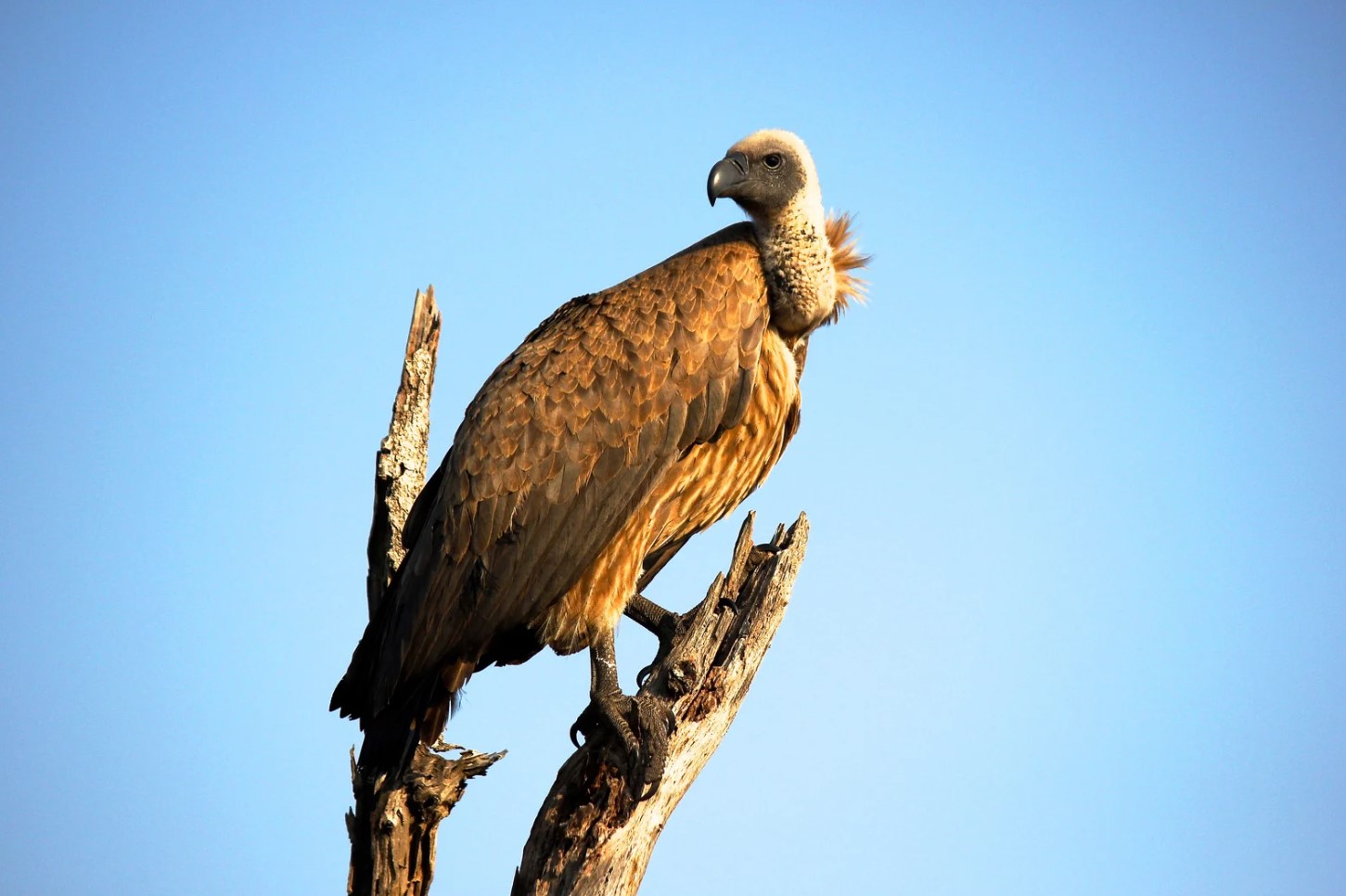
Threats Facing Vultures And Conservation Efforts
Vultures are essential members of the ecosystem as they play a crucial role in maintaining ecological equilibrium. Their scavenging habits help in cleaning the environment by removing dead and decaying matter. However, vultures around the world are facing various threats that are impacting their population. These threats need immediate attention to prevent the already declining vulture population from completely disappearing. In this blog post, we will discuss the threats facing vultures and the efforts made towards their conservation.
One of the significant threats to vultures is habitat loss. With fast-paced urbanization, habitats of vultures are getting destroyed. Furthermore, the use of pesticides and other chemicals in agriculture has led to the contamination of their food sources. This has resulted in a decline in the population of vultures in many countries.
Another major threat to vultures is poaching. Vulture body parts are in high demand in traditional medicine, which is illegal but still prevalent in many parts of the world. Poaching has led to a significant decline in the vulture population, and some species are close to extinction. Therefore, stringent measures need to be taken to prevent the poaching of vultures.
- Conservationists and organizations around the world are taking steps towards the conservation of vultures. Some of the efforts include:
- Establishing protected areas where vultures can breed and thrive without human interference
- Creating awareness among people about the importance of vultures in the ecosystem
- Cracking down on illegal poaching and trading of vulture body parts
- Protecting the habitat of vultures
- Breeding vultures in captivity and releasing them into the wild
The conservation efforts have borne some fruit, and vulture populations have shown signs of recovery in some parts of the world. For instance, in India, vulture populations have started recovering due to the establishment of breeding centers and a ban on the use of a drug that led to the death of vultures in the past. However, more efforts are required to save the vulture population globally.
In conclusion, vultures are facing various threats, which are leading to a decline in their population around the world. Immediate action needs to be taken to stop habitat loss, poaching, and other factors that are impacting vultures. The conservation efforts made towards the protection of vultures are laudable, and more needs to be done to ensure their survival in the future.
Endangered Vulture Species And Conservation Measures
Endangered Vulture Species And Conservation Measures
Vultures play a vital role in maintaining the balance of ecosystems by consuming carrion and preventing the spread of disease. Unfortunately, many vulture species are facing threats and are becoming endangered. Some of the most endangered species of vultures include the White-rumped vulture, Indian vulture, and Slender-billed vulture.
- The White-rumped vulture, once the most populous species, has seen a 99.9% decline in population over the past three decades due to the use of veterinary drugs containing Diclofenac which is toxic to vultures.
- The Indian vulture population declined by 97% due to the same cause of Diclofenac poisoning.
- The Slender-billed vulture population decreased by approximately 97% due to habitat loss and other threats.
Conservation measures such as captive breeding programs, anti-poisoning measures, habitat restoration, and awareness campaigns have been implemented to protect these endangered species.
| Captive Breeding Programs | Anti-Poisoning Measures | Habitat Restoration and Awareness Campaigns |
|---|---|---|
| Captive breeding programs have been established to create a captive population for the purpose of reintroducing them into the wild. These programs have been successful in increasing the captive population, and some species have been released back into the wild successfully. | To prevent further decline of vulture populations, anti-poisoning measures have been implemented. Vultures often consume poisoned carcasses or are intentionally poisoned. These measures include the production of safe veterinary drugs to replace those containing Diclofenac and strict enforcement of regulations and laws against the use of poison baits. | Efforts have been made to restore the habitats of vultures, such as the creation of protected areas or national parks. Awareness campaigns that target livestock farmers have been created to improve their understanding of the ecosystem and how vultures contribute to it. Additionally, advocacy campaigns on the importance of vultures for the ecosystem and the dangers of the use of poison bait have been established. |
The conservation of vulture species is crucial in maintaining the balance of ecosystems, and it is essential that the public understands the significance of vultures and the importance of conservation efforts.
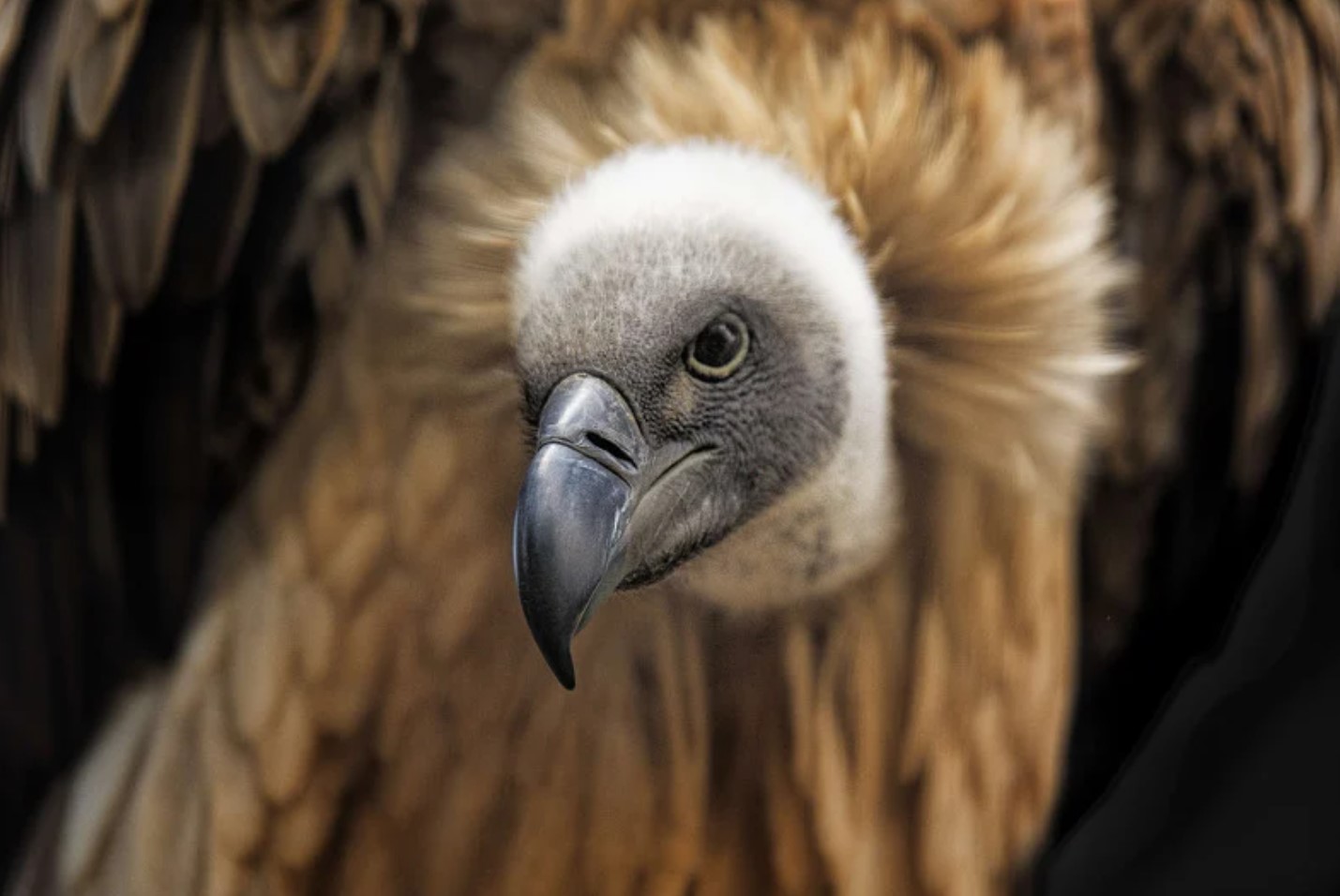
Vulture Breeding Programs And Reintroduction Efforts
Vultures are an important part of our ecosystem, yet many populations around the world are facing challenges that threaten their livelihoods. Due to habitat loss, poaching, and other factors, some species of vultures are critically endangered. To combat this, many organizations have implemented vulture breeding programs and reintroduction efforts. These programs are designed to help vultures thrive, but they require a great deal of effort and resources to be successful.
Vulture Breeding Programs: Many organizations have established breeding programs for vultures, such as the Vulture Conservation Breeding Centre in Nepal. These programs aim to increase the number of vultures in captivity, which can then be used to help repopulate wild populations. Breeding programs are carefully monitored, and only healthy individuals are selected for breeding. This helps to ensure that the offspring are healthy and have the best chance of survival.
- Some vulture breeding programs also aim to study the behavior and biology of vultures in captivity, which can be helpful in developing conservation strategies.
- Additionally, captive breeding programs can serve as a safeguard against extinction. If wild populations continue to decline, captive populations can be used to reintroduce vultures into the wild.
Reintroduction Efforts: Reintroduction programs involve releasing captive-bred vultures into the wild with the hope that they will establish themselves and contribute to the growth of the local population. These programs are complex and require a lot of planning and resources. For example, vultures that are released into the wild must be regularly monitored to ensure that they are thriving. Additionally, habitat restoration may be necessary to provide suitable habitat for vultures.
| Countries implementing vulture breeding programs and reintroduction efforts: |
|---|
| India |
| Nepal |
| Spain |
| South Africa |
Challenges and Successes: Despite the efforts of many organizations, vulture species around the world continue to face threats. Poaching, habitat loss, and poisoning are all major threats to vultures. However, there have been some success stories. For example, many vultures in Spain have been successfully reintroduced into the wild, thanks in part to habitat restoration efforts. Additionally, projects in India have helped to increase vulture populations, and the Vulture Conservation Breeding Centre in Nepal has successfully raised and released hundreds of vultures back into the wild.
The future of vultures is uncertain, but vulture breeding programs and reintroduction efforts provide hope for these important birds. By working together and dedicating time and resources, we can help to preserve these invaluable creatures for generations to come.
Cultural And Historical Significance Of Vultures
Vultures have played an important role in various cultures and religions throughout history due to their distinctive appearance and behavior. In ancient Egypt, vultures were considered sacred birds and were associated with the goddess Nekhbet, who was often depicted in vulture form wearing the double crown of Upper and Lower Egypt. They were also believed to be responsible for carrying the souls of the dead to the realm of the afterlife, which gave them a significant role in funerary rites.
In Hinduism, vultures are revered as sacred birds and are believed to have a connection with the god Vishnu. They are often depicted as his vehicle or mount in various depictions and festivals. Similarly, in Zoroastrianism, vultures are revered as “benefactors of mankind” and are believed to purify the dead through their consumption of the body.
Despite their significance in various cultures, vultures have also been associated with negative connotations. In Western culture, vultures are often portrayed as symbols of death, decay, and destruction. This can be seen in popular culture, where vultures are commonly depicted as scavengers of corpses and carrion. However, this portrayal of vultures fails to recognize their essential role in the ecosystem and the importance of their scavenging habits in preventing the spread of disease.
| Culture or Religion | Significance of Vultures |
|---|---|
| Ancient Egypt | Sacred bird associated with funerary rites and the afterlife |
| Hinduism | Revered as sacred birds and believed to be connected with the god Vishnu |
| Zoroastrianism | Revered as “benefactors of mankind” and believed to purify the dead |
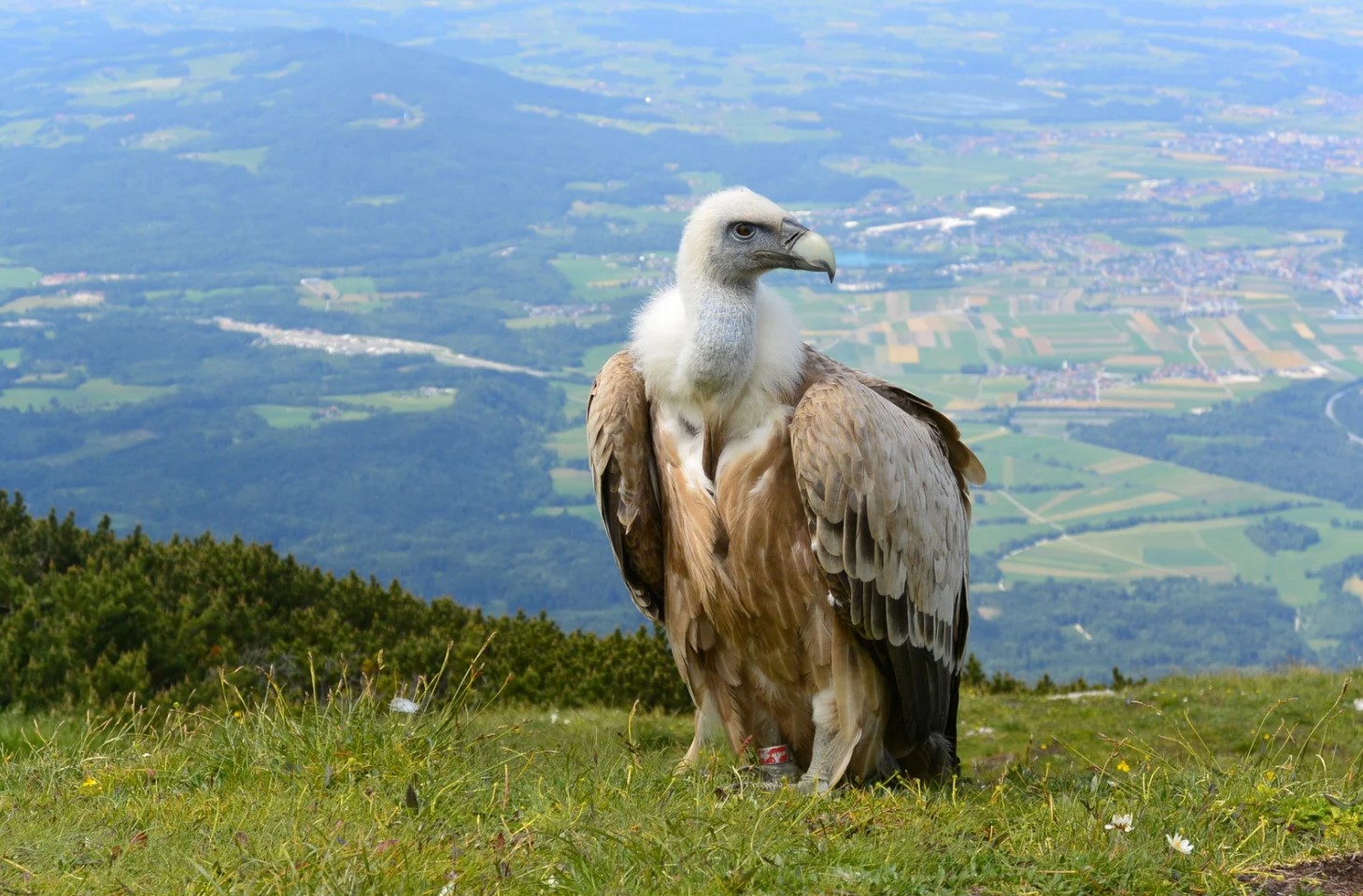
Ancient Uses Of Vulture Parts İn Traditional Medicines
Ancient cultures across the world have long recognized the therapeutic benefits of vulture parts for medicinal purposes. These birds are known for their powerful and mysterious presence in nature, and have been revered for their healing properties since ancient times. The use of vulture parts in traditional medicines is still practiced in many parts of the world today.
- One of the most common uses of vulture parts in traditional medicine is as an anti-inflammatory.
- Vulture claws and beaks have been used to treat rheumatoid arthritis, joint pains, and other inflammatory conditions.
- Vulture eggs have also been used in traditional medicines to treat asthma and other respiratory ailments.
Some cultures also use vulture brain extracts for medicinal purposes. In traditional Chinese medicine, vulture brain extracts are used to treat stroke and other neurological conditions. These extracts contain certain enzymes and other active compounds that are believed to help heal damaged brain tissues and improve cognitive function.
| Vulture Part | Traditional Use in Medicine |
|---|---|
| Claws and Beaks | Treatment for rheumatoid arthritis and joint pains |
| Vulture Eggs | Treatment for asthma and respiratory ailments |
| Brain extracts | Treatment for stroke and neurological conditions |
While the use of vulture parts in traditional medicine has been a centuries-old practice, it has also raised concerns about poaching and the illegal wildlife trade. The decline in vulture populations in many parts of the world has been attributed to this trade, and conservation organizations are working to raise awareness about the importance of protecting these majestic birds.
As our understanding of the medicinal benefits of vulture parts grows, it is essential that we find ways to conserve these species without endangering them further. By supporting conservation efforts and raising awareness about the value of vulture populations in our ecosystems, we can ensure that these birds continue to play a vital role in our planet’s biodiversity.
Mythology And Symbolism Associated With Vultures
The vulture, a bird of prey scavenger, has been a part of mythology and symbolism in various cultures across the world. Some believed it to be a symbol of death, while others saw it as a godly figure. Here are some examples of mythology and symbolism associated with vultures.
Symbol of Death: In many cultures, vultures are often associated with death, decay, and destruction due to their unique feeding habits. Native American tribes saw the vulture as a symbol of death and the underworld. In Hindu mythology, Yama, the god of death, is often depicted as riding a vulture.
Godly Figure: In some cultures, the vulture was seen as an important godly figure. The ancient Egyptians believed that the vulture represented the goddess Nekhbet, who was the patron goddess of Upper Egypt. She was also depicted as holding a sacred symbol, the ‘ankh,’ which represented eternal life.
- The Mayans: In Mayan mythology, the vulture was believed to be a powerful spiritual messenger sent from the gods to forewarn of impending doom, change, and transformation. They were considered sacred birds and were often used in religious rituals and ceremonies.
- Romans and Greeks: In ancient Rome and Greece, the vulture was considered as a symbol of life or survival. The goddess of love, Aphrodite, is often seen in ancient Greek mythology holding a vulture as a symbol of life and fertility.
Vultures have also been associated with rebirth and renewal, mainly because of their scavenging habits. They are known for cleaning up decomposing flesh and serving as nature’s garbage disposals. As scavengers, vultures are essential to the ecosystem, and their presence or absence could have far-reaching consequences.
| Summary |
|---|
| As scavengers, vultures play an important role in the ecosystem, but their role goes beyond that. They have been associated with mythology and symbolism across various cultures, and their significance has varied greatly. For some, it was a symbolic godly figure, while for others, it was a symbol of death and decay. Regardless, the vulture has left an indelible mark in human history, and it continues to impact our lives, whether we realize it or not. |
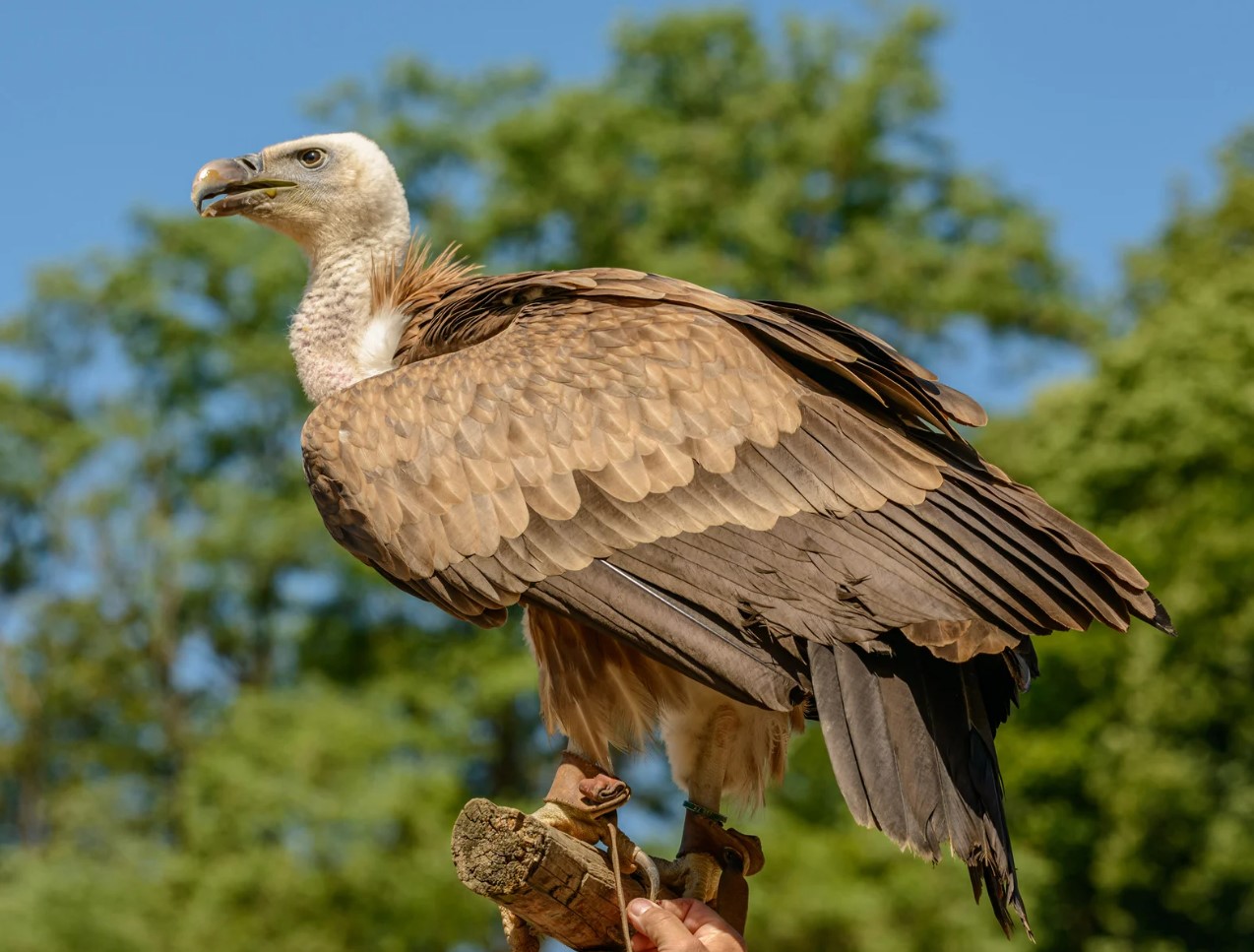
Vultures İn Literature, Art, And Popular Culture
Vultures, commonly known as the scavengers of the sky, have always been prominent in literature, art and popular culture. These creatures have been depicted differently in various works of fiction, non-fiction and media. They have various symbolic meanings that range from death and decay to cleanliness and purifying. In this blog post, we will explore the cultural significance of vultures in literature, art, and popular culture.
In literature, vultures have played a significant role in many stories, especially in ancient mythology. In Greek mythology, vultures were associated with the god of prophecy, Apollo, and were believed to be his messengers. In Hindu mythology, vultures were seen as sacred birds and were believed to be associated with Lord Vishnu. Moreover, vultures have been personified in many stories, such as in Aesop’s fables, giving them the ability to speak and reason like humans.
In art, vultures have been visually represented in various ways. In ancient Egyptian art, vultures were depicted as the protectors of the pharaohs and their souls. They were often shown spreading their wings over the dead pharaohs. In Christian art, vultures were depicted as symbols of death and decay, often shown resting on top of skulls and bones. They were also associated with the end of the world, as they were believed to descend on the earth during the apocalypse.
- Vulture Fact: Vultures are crucial to ecosystems as they clean up dead and decaying animals, which helps to prevent the spread of diseases.
Popular culture is no stranger to the symbolism and importance of vultures. Many media forms have used vultures as a way to evoke different feelings and meanings. In Disney’s “The Lion King,” the character Zazu, a hornbill, is shown to be afraid of the vultures, representing the evil present in the story. In the famous novel “To Kill a Mockingbird,” vultures are used to symbolize the tragic end of a character, and the inevitability of death. Similarly, in the popular television series “Breaking Bad,” vultures are used to convey the idea of violence and death.
| Endangered Vulture Species | Conservation Measures |
|---|---|
| White-backed vulture | Conservation breeding and reintroduction programs. |
| Slender-billed vulture | Banning of veterinary use of the drug diclofenac. |
| Lappet-faced vulture | Awareness campaigns to educate people about the importance of vultures in the ecosystem. |
In conclusion, vultures have played an important role in literature, art, and popular culture. These birds may be seen as a symbol of death and decay, but they also have a crucial role to play in the ecosystem. As their populations continue to decline, it is essential to recognize their significance and protect them through conservation measures. Let us not forget the vultures, for they have left an indelible mark on our cultural history.
Vulture Facts And Trivia
Vultures are fascinating creatures that we don’t often get to hear much about. In this article, we will be delving into some interesting facts and trivia about them!
- There are about 23 species of vultures found in the world: Turkey Vultures, Black Vultures, Andean Condors, California Condors, Eurasian Griffon Vultures, Himalayan Griffon Vultures, White-rumped Vultures, and Bearded Vultures, to name a few.
- Vultures play a crucial role in the ecosystem: They act as natural garbage disposals, consuming dead animals that would otherwise rot and spread disease.
- When threatened, vultures can vomit to defend themselves: This action might seem disgusting to us, but it can help the vulture become lighter and faster, making it easier to escape from a predator.
Next, let’s look at some interesting physical characteristics of vultures:
| Vulture Fact | Explanation |
|---|---|
| Vultures have bald heads. | This helps them avoid getting bits of flesh stuck in their feathers while feeding on a carcass. |
| Vultures have great eyesight. | Some species can see over 3 miles away! |
| Some species of vultures can fly at high altitudes. | The Rüppell’s vulture has been known to fly as high as 37,000 feet, which is higher than any other bird. |
Lastly, let’s explore some cultural symbolism associated with vultures:
- In some Native American cultures, the vulture is seen as a symbol of purification and renewal: This is because they help clean up and remove dead bodies from the earth.
- In Hindu mythology, the vulture is a symbol of the god Vishnu: Vishnu’s mount, Garuda, is often depicted as a half-man, half-vulture creature.
- The ancient Egyptians believed that vultures represented both death and resurrection: They often depicted the goddess Nekhbet, who held a vulture on her head, as a symbol of protection and motherhood.
These are just a few of the many fascinating facts and pieces of trivia about vultures. They may not be the most glamorous birds out there, but they certainly play an important role in our world!
What The Future Holds For Vulture Populations Globally
Vultures have always been seen as symbols of death and decay, but their role in the ecosystem is much broader than that. These birds of prey play a crucial role in maintaining the balance of nature by cleaning up the environment from carcasses that could otherwise cause the spread of diseases. However, despite their vital importance, vultures are facing a significant threat due to a variety of factors, including habitat loss, poaching, and poisoning.
In recent years, conservation efforts have been underway to protect and conserve vulture populations globally. One of the most significant measures taken to protect these birds is the establishment of breeding programs and reintroduction efforts in areas where their populations have been decimated. In addition, organizations such as the Vulture Conservation Foundation are working tirelessly to educate the public about the essential role that vultures play in the ecosystem and to lobby governments to take concrete actions to protect these birds.
- One of the most significant challenges facing vultures today is habitat loss, which is primarily caused by human activities such as deforestation and urbanization. This loss of habitat has led to a decline in vulture populations and a reduction in their available food sources.
- In some parts of the world, vultures are hunted and poached for their body parts, which are used in traditional medicines and as talismans. This demand has put significant pressure on vulture populations, and many species are now critically endangered.
- Another major threat to vultures is poisoning, which is often used to eliminate other predators that pose a threat to livestock. However, vultures are also affected by these toxins, which can lead to their death.
| Species | Status | Threats |
|---|---|---|
| Critically Endangered Vulture | Critically Endangered | Habitat loss, poisoning, poaching |
| White-rumped Vulture | Critically Endangered | Poisoning and habitat loss |
| Slender-billed Vulture | Critically Endangered | Poisoning and habitat loss |
| Indian Vulture | Critically Endangered | Poisoning and habitat loss |
Despite the challenges facing vultures, there is a glimmer of hope for their future. Many organizations are working tirelessly to raise awareness about the importance of these birds and the threats that they face. By educating the public and lobbying governments to take concrete actions to protect vultures and their habitats, we can ensure that these birds of prey will continue to play a crucial role in the ecosystem for generations to come.